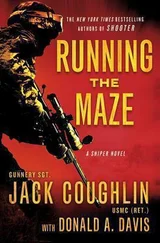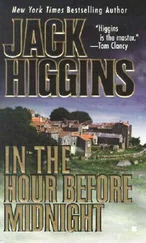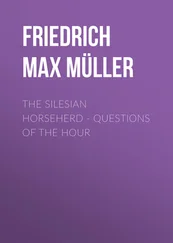— Ladies and gentlemen, I’m pleased to announce boarding for SAS flight 559 to Paris Charles de Gaulle—
I find my seat in the second row of the airplane. The middle-aged woman in the aisle seat watches me stuff my backpack in the overhead compartment and squeeze by her to the window. A few minutes after the plane takes off, she closes her magazine and asks me where I’m from. Her accent sounds Irish.
— An American in a German coat, she says, backpacking all over Europe. I’ve heard about these kinds of trips. If it’s Tuesday it must be Paris, that sort of thing?
— Sort of.
— It sounds exciting. What do you think of Europe so far?
I look out the window at the clouds below.
— Of course, the woman adds, it’s not for everyone—
— I love it here.

At Charles de Gaulle I’m the first one off the airplane. Outside the baggage claim there’s a dense line of people waiting behind the barricade. Mireille is there.
She leans forward with her elbows propped on the rail, her face in her hands. When she sees me she straightens up and her mouth opens, but she covers it with her hand as if embarrassed. She runs along the railing beside me, appearing and disappearing behind the families with strollers, behind the chauffeurs holding placards with names on them. Mireille comes around the end of the barrier and takes my hand.
— Suis-moi.
She leads me out of the terminal through the automatic doors. The autumn air is cool and we walk quickly down the sidewalk. Cars and buses go past us, stopping to pick up passengers and pulling out again. Mireille takes me to a niche behind a potted tree. I put my arms around her and pull her close. I kiss her. Her lips are warm. She smiles and wipes off a tear and laughs, whispering my name. I put my hand on her face and kiss her again. A line of Mercedes taxis go past us, then a worker pushing a huge train of luggage carts.
Mireille is holding my hand and she feels the thin cut on my palm. She frowns, stroking the wound.
— You hurt yourself.
— I fell down in Iceland. There was lava on the ground. It was pretty sharp.
Mireille lifts my hand and kisses it playfully.
— I’m sorry I wasn’t very good at waiting. I just worried you’d never come back. But you did. So you don’t have to explain anything—
— I didn’t get the money.
Mireille looks at me. Her hair has grown out in the last month and it goes over her ears now. Her gray eyes are pale in the sunlight.
— You were too late?
I shake my head. — It wasn’t mine after all.
Mireille nods slowly. She glances at the taxis going past and weaves her fingers into mine, turning back to me. We start down the sidewalk toward the RER trains for Paris. Finally she says, — Then you were right. You got your answer in the end.
— I guess I did.
— What was it?
I reach into my coat and pull out the rest of my Icelandic change, thick brass coins with the image of a fish on the reverse. I hand them to Mireille.
— What’s this?
— Three hundred and fifty krónur. Around four euros. It’s all I’ve got left in the world—
— That’s not true.
Mireille puts the coins in her pocket. I put my arm around her.
— What’s the winter like here?
— Dark and cold, she says. But we’ll survive.

The storm that killed Ashley Walsingham was not related to the monsoon. It had formed three weeks earlier as a low-pressure disturbance above the jewel-green waters of the eastern Mediterranean.
The storm traveled far to meet the expedition. It sailed eastward over the arid plateau of northern Arabia; it crossed Afghanistan, brewing above the snow peaks and Silk Road passes of the Hindu Kush. It skirted the formidable summit of K2 along the border of the Republic of China and the Princely State of Kashmir and Jammu, continuing southeast over the glaciated ranges of the Karakoram.
In late May the disturbance swept east over the immense Himalayan massif, flowing above the peaks now known as Annapurna and Ama Dablam and Makalu. None of these mountains had yet been climbed or even set foot upon by a European. The storm released thick snowfalls and howling blizzards throughout the ranges of the western Himalaya. On June 7, 1924, the storm’s full measure reached the northeast face of Mount Everest in the self-proclaimed sovereign Kingdom of Tibet. Mount Everest was the tallest known mountain in the world.

On the same day at the Alipore Observatory in Calcutta, 385 miles south of Mount Everest, the resident meteorologist Dr. S. N. Sen walked outside to take the afternoon’s temperature readings, pencil and logbook in hand. It was six minutes until four. The air was sweltering.
Crossing the observatory’s back lawn, Sen patted the sweat from his neck and brow with a linen handkerchief, glancing skyward. A few threads of cirrus fibratus strung the eastern sky; the rest was a crystalline azure.
Sen’s thoughts returned to the onset of the Asian monsoon. Each day he telegraphed the Mount Everest Expedition with new data, forecasting the probable date of the monsoon’s arrival. It was a difficult question. He had to take into account, for instance, the complex interaction of Himalayan and African and equatorial air masses; the retrograde motion of cyclones near the Bay of Bengal; the passage of western disturbances across the subcontinent. One such disturbance ought to reach Mount Everest very soon. Sen had taken lunch at his desk to study the problem, the morning weather telegrams fanned out before him, freshly wired from a dozen surface and upper-air weather stations throughout the Himalaya.
— The fourteenth of June, Sen murmured. No earlier.
Sen reached the Stevenson screen where the thermometers were held, a case of enameled pine with double-louvered walls. He opened the padlock and squinted at the four thermometers inside, appraising tiny gradations between the black bands of the temperature scale. It was 91.2 degrees Fahrenheit.

At the Mount Everest Expedition base camp at the foot of the Rongbuk Glacier, at an altitude of 18,190 feet, Dr. Hingston took the afternoon’s meteorological measurements at 4:00 p.m, as he did every day. Hingston was the expedition’s medical officer, but he was also a naturalist who observed the climate with genuine interest.
Hingston kept a pair of maximum and minimum thermometers on a wooden provision box under his tent fly, the thermometers fitted in a snap case of morocco leather. He eyed the floating index inside the glass cylinder of the maximum thermometer, the wind lashing the canvas tent fly against his back. Earlier the thermometer’s filament had been pushed up to 33 degrees, but the mercury had since fallen to 11. Hingston logged the figures in neat numerals on the green-columned sheets of the meteorological diary.
Next he cradled the cold tube of a Kata thermometer under his armpit for several minutes. He hobbled out among the dirt and gravel, watching the red fluid dive in the wind with one eye on the sweep hand of his pocket watch. Finally Hingston placed a swatch of dark fur on a large stone, suspending a black-bulb thermometer above it. He rested the toe of his boot on the fur and waited for the mercury to rise.
Hingston surveyed his surroundings. The boulders around him had been sculpted by wind over centuries, their surface scarred and striated on the windward side, smooth and glassy on the lee side. They reminded him of coral. Hingston marveled at the diverse conditions that shaped animate and inanimate objects, the legion adaptations of mammal and insect and bird life to this hostile world.
Читать дальше













